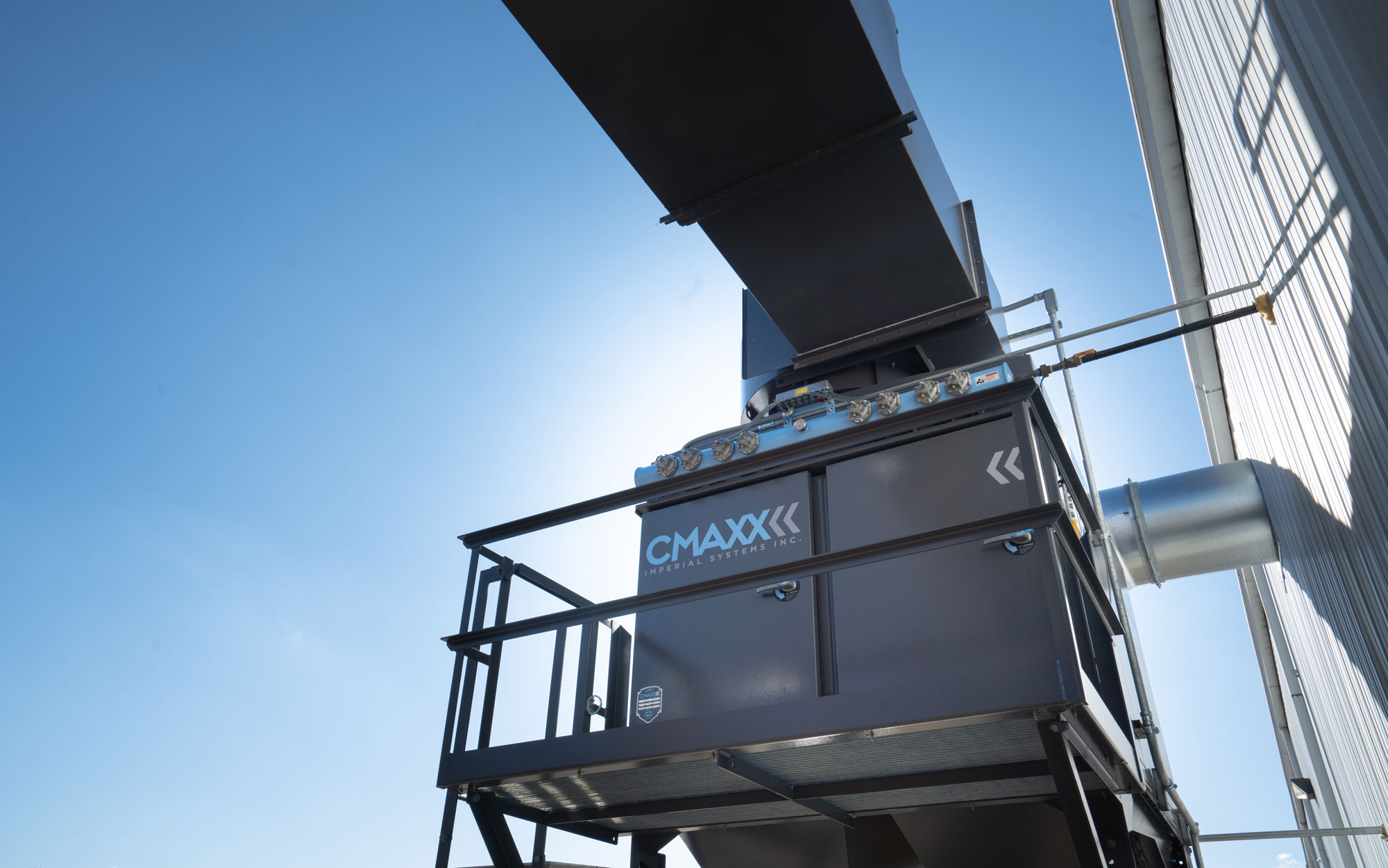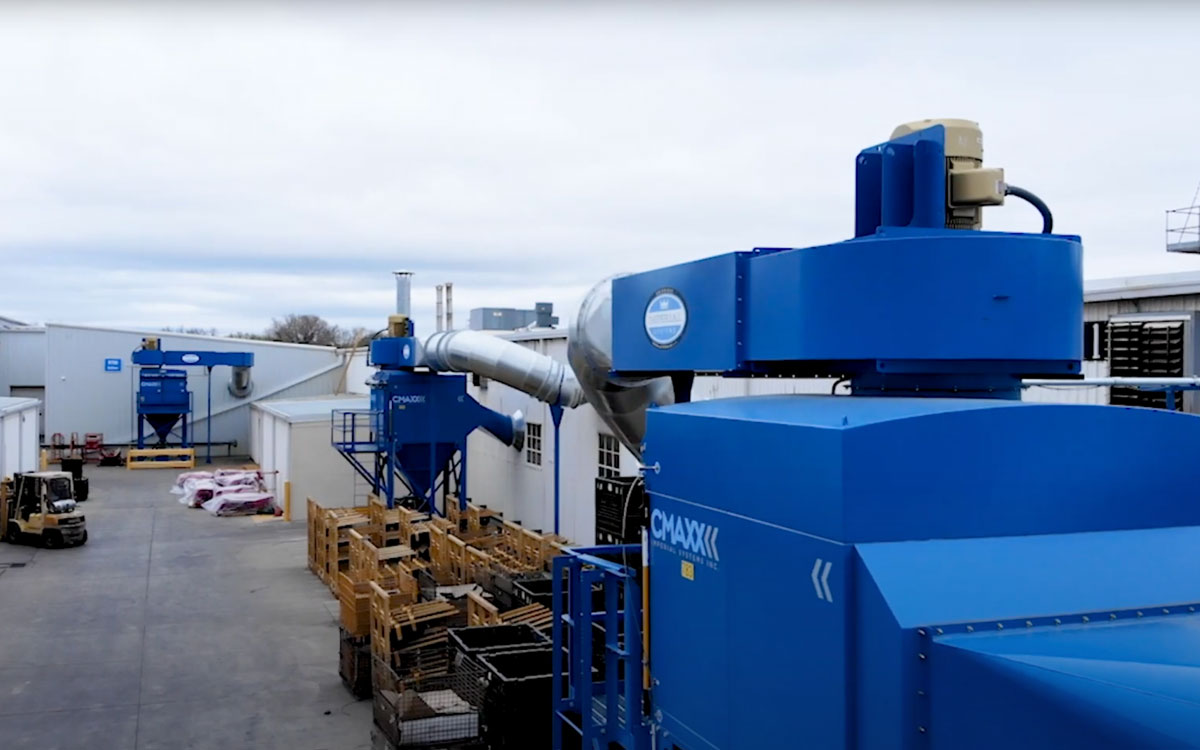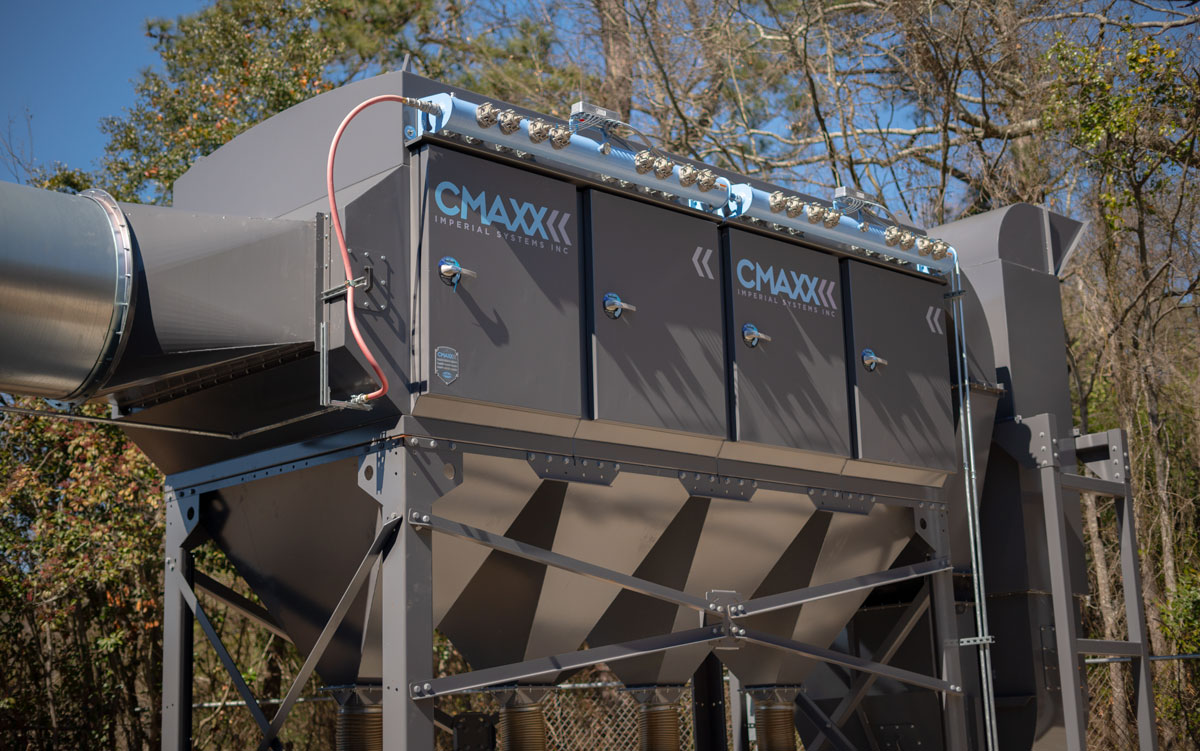In this episode of the Dusty Jobs Podcast our guest Paul Carucci talks about Robotic automation and how to integrate a new system. Paul mentions how he started up and what you might need or look for when looking for a robot. Donovan and Paul also discuss what the future might look like with robotic automation.
Dusty Jobs Podcast Episode 9 – Robotics with Paul Carucci
Narrator: Welcome to the Dusty Jobs Podcast from Imperial Systems. Industry knowledge to make your job easier and safer.
Donovan: Hello. Welcome to another episode of the Dusty Jobs podcast. Today we’ve got Paul Carucci with us from P.A. Robotics with us. How are you doing today, Paul?
Paul: We’re doing good. Thanks for having me.
Donovan: Thanks for coming in. We’re just going to be talking a little bit today about robotics and automation. You’re company has been in existence for how long now?
Paul: Seven years.
Donovan: Seven years, but you’re been in the industry for…
Paul: Over fourteen
Donovan: Over fourteen years. You have a little bit of knowledge in this, and experience.
Paul: Theres a little bit there. I wouldn’t call myself an expert by any means.
Donovan: You know more than I do. I know that much. We really appreciate you coming in today and helping us understand a little bit more about the robotics industry and kind of what’s going on there, where it came from, where it’s going. We were talking a little bit before this. The first one you did was fourteen years ago. Where did that start out at?
Paul: It went up to New York. It was a mower manufacturer.
Donovan: A mower manufacturer?
Paul: And it’s still in production today. It’s pretty neat, seeing the old machines. When you have your first on that’s still out there. It wasn’t my company at that point, but it was still neat that it was the first one I had built, first one I had installed, programmed, trained, taught the guys and the original guy is still there.
Donovan: The original guy is still running it?
Paul: He’s over the department, but he’s still there and plays with it everyday.
Donovan: I’m sure that’s part of the reason it’s still going too, you know. If you get somebody in there for a while and they take care of it. So move us forward from there. That was your first robot. You were working with a company, and you did that for…
Paul: Until 2013. They closed their doors. They weren’t doing what they wanted to in the industry. They were expected it to grow exponentially faster than they were. They just decided to get out, and I wasn’t ready. I liked what I was doing. So, it was a trying time, and it was a decision to make, to jump two feet into it. My wife is always behind me and very helpful. So we jumped into it. It took about a year to get going, to get people to realize that you can do what you used to do without all the infrastructure behind you. My biggest customer today bought the first machine off of me. When it came in on their floor he took me to the side and said, “I just want to let you know that I’m impressed. When you’re on your own it’s a little bit different that what you had before. I actually like this way better than what you guys had before.” It was a super booster for me to get going.
Donovan: Well, I would imagine too when you’re all on your own and able to make the calls you can do it the way you want to do it.
Paul: Everything I wanted to change that they wouldn’t allow me to change got changed right now.
Donovan: You got a little more maneuverability, a little flexibility.
Paul: You have to listen to the customer. The customer drives everything. If you’re not willing to listen to what they didn’t like about your system, you might as well not be continuing because eventually you’re going to go out the door.
Donovan: That’s right. That’s how it goes.
Paul: Customers motivate and drive a lot of things.
Donovan: They pay your paychecks, right? So, when we’re talking about customers, we start to think about a robotics system, when you look at that. We might have some people out there listening now that are thinking about getting a system. How do you help walk a customer through qualifying whether they need a system, whether they don’t. What are the things you look for whenever you go into a company? Maybe they give you a call, “Hey Paul, can you come down and look at this? I think we need a system.” What are some questions you would fire out there for someone who’s looking at a system? What makes sense, what doesn’t make sense, stuff like that.
Paul: Well, we look at production volumes. You know, are you making big batch runs? Small batch runs? Parts? Do you make fifty of this part a year or do you make 100 parts a year? Are you a lean manufacturer and you do small batch runs but all year long? Do you do large batch runs? How big are your parts? How much welding time are we looking at per part? We want to make sure that return on investment covers everything and we’re not missing anything.
Donovan: So lets pretend I’m a customer right now. I look at you and I think I’m making a lot of parts. What would you define a lot of parts as when you’re saying a big batch run or a small batch run?
Paul: Do you have enough parts to keep a machine busy for forty hours a week? If you’re not keeping it busy forty hours a week it’s tough to make that jump. If you’re going to run it twenty hours your ROI is twice as long. Companies do single shift versus three shift too. You definitely have to keep it busy. So if a man’s doing the job, or if you have three to five people doing something, a robot is going to do three to five what a single person is going to do. So if you take your basic welder, and he’s putting out parts, the robots going to do three to five times as many. Where a single man loads everything up, and welds the parts in a fixture, and pulls it out, now you’ve got one person loading a fixture, and while the robot is running he’s loading the other fixture.
Donovan: I’ll play a little devil’s advocate here, right? If I’ve still got a guy standing there, why do I want to robot? Why don’t I have that guy doing the welding?
Paul: You don’t necessarily need your welder level ready guy to run the machine. So, you have a programer for the robots. You’re always creating a higher level job any time you bring a robot in. Somebody has to program it, and make sure it’s doing what it’s supposed to do. Then, you can have more of an operator level guy run the machine. Keep your welder for welding.
Donovan: I’ve got you. On those custom jobs, on those one off pieces. You can let this thing run and do the mundane task that maybe sometimes guys get a little bored doing. Their work might not be as accurate because it’s not engaging enough. Things like that, that’s what you’re saying.
Paul: A normal welder will get bored if he does the same thing all day every day. Now, not everybody. There are people who love that work. They’re far and few between compared to the person who wants to do the harder level stuff.
Donovan: If you’re just running the same line all day long for and eight to ten hour shift, I can imagine that would be harder and harder to pay attention to running that same line.
Paul: I wouldn’t like that job.
Donovan: So what’s the industries that you see as the most commonplace when you are going into it? We’ve got some people out there thinking, “Well, would this work in my industry?” What are some go to’s and somethings you would always say no to?
Paul: We do a lot of welding applications. You can use a robot for just about any task you want. Production is a big thing. The industry doesn’t matter necessarily. If you’ve got parts that you need welded together, you can look at robots. Do you have productions to justify the robot? That’s one of the bigger things. I don’t know what industry wouldn’t…if you have an industry where you have repeatable work…you don’t want the robot for something that’s inconsistent. It does the same thing every day.
Donovan: So when you’re looking at qualifying whether you want a robot or not, if I’m hearing you right, the question is, “Do you have enough volume? Do you have enough hours for it? Do you have a repeatable job? Do you have the facility for it?” That would probably be the three qualifying factors, right?
Paul: Yeah, and “Do you plan to grow?” The biggest reason people are bringing robots in, too is because of production costs. If you can ramp your production up with the same amount of man power, everybody thinks “Oh, we’re replacing jobs.” It’s not. What you’re doing is creating more throughput through the facility. Now it take more people for the backend – both ends, beginning before it. You’re creating more parts to bring in, and you put more parts out. It grows a company. I’ve never seen a company loose manpower because they brought a robot in. They always grew.
Donovan: I always think about our own facility here. We have our guys that are welding, and we have guys that are building things, putting things together. They’re the assembly team. I can imagine that if were able to get a couple things through the weld section faster that means you would need more guys in the production to build it faster. It kind of just speeds everything up. I would imagine it kind of helps with the accuracy of everything too. I would imagine that’s a big draw to it.
Paul: You have to have good parts in to get good parts out though. A lot of people think they can just throw it at a robot and it’s going to be magic and come out great. If you have junk you can’t expect miracles. Now, a robot with touch sensing, we can cover a few variables, seam tracking and different things.
Donovan: Now, when you say touch sensing, what does that mean? I’m a rookie to this.
Paul: Say you have a part that’s fairly close, but it may vary an eighth inch. So your weld seam is going to be off an eighth inch. That’s way outside of tolerable levels of movement. So you can physically touch the part, find out where it’s at, and relocate your weld equipment.
Donovan: It’s touching it. It can read where the weld…
Paul: Finding the offset.
Donovan: Nice. Well that’s very helpful, I’d imagine.
Paul: You’ve got to have a good start point for seam tracking. I can actually, during a fillet weld, can actually track a seam if the seam is moving during the weld process.
Donovan: Really?
Paul: Yeah, but you’ve got to have a good start point for seam welding.
Donovan: So, as long as you’ve got a good point to start on, it can figure it out from there?
Paul: Yes. Well, I mean it’s programmed, but if it varies slightly during the weld process it will track and follow it.
Donovan: I didn’t know it could do any of that stuff. That’s great.
Paul: There’s a lot of little things out there.
Donovan: What’s the most difficult application you’ve had to deal with? Have you ever had one that’s just been a line, like man this has been a challenge but it worked out well in the end?
Paul: Uh…
Donovan: I stumped you. I didn’t mean to stump you.
Paul: When you get big, odd parts. A person absolutely must automate the big stuff. That’s the biggest challenge, but it’s also the biggest reward at the end of it. When you get something that has a lot of variables and you go through and work out all the bugs…You know, tooling is a big part of robots. Good tooling allows you to handle a lot of things. You have to know where your zero base points are. Fixed versus the variable end of the part.
Donovan: So the bigger the part, there’s more places where you have to start, more places where you have to end, more angles to account for.
Paul: More variables.
Donovan: More variables, and that starts to become the challenge, getting the big stuff. But little stuff – zip, zip, zip, zip. Well, you know, we do a lot of welding here too. We’ve come up with some stuff and we’re trying to help the robotics industry, and that’s how we developed our relationship with you. So, that’s where we’re at. The future of our company is trying to move that way and help out robotics. Where do you see robotics going? Where do you think you might see more of it?
Paul: It’s only going to grow. It’s getting harder and harder to find people to fill the welding positions. I think in the united states we’re going to be bringing a whole lot more back with the COVID and everything that happened kind of pulled things back. Getting parts and stuff from overseas was tough. I think you’re going to see things grow within the US…I guess I lost track of where we were going.
Donovan: I mean, you’re saying we’re already kind of in a trade slump at that point. Unfortunately for years a lot of people didn’t look at welding and those types of jobs as an actual viable option. It might have been that our society and culture pushed us away from that. So we’ve got a little bit of a gap. We’re probably going to have to find a way to fill that here because of the COVID and because of other things. People are bringing things back to America. If you’re not a certified, qualified welder, well, maybe you can still help run the robot is what I’m hearing you say, right? We can still start bringing American jobs in and keeping people employed, especially at a time like this where there’s a lot of people shifting jobs and looking for new employment opportunities. Learning how to run a robots or supervise a robot might be a better option than learning how to weld.
Paul: It’s a definite. My best team for when I sell a brand new system, I recommend from the company that I need two guys, two people. I prefer a welder and an engineer level guy, a person that’s got a good head on their shoulders for the computer side of it. Those seem to make the best team. The computer level guy might have a CAD background or whatever for fixture and tooling but the welder guy – you can’t get away from working with welders without a welder for the industry that I focus in. So that’s been my best team going forward, is those two people. They need to work well together. The person running the machine doesn’t need that.
Donovan: So if you have two people on your team that understands those two traits. You need a computer person. You need someone who knows what a good weld is supposed to look like, what a good weld is supposed to be like. If you have those two helping out, you could put them on one of those machines. Maybe I could even run one, I don’t know.
Paul: Anybody can learn to run one.
Donovan: If anybody can do it, then I can probably do it. That’s encouraging. If this doesn’t work out for me maybe you can hook me up with a robot job somewhere.
Paul: I don’t think we’ll do that. Nothing against you. I don’t think you’re ever going to go down here.
Donovan: Well that’s interesting. Have you seen more people because of the COVID, because of that kind of mentality? The robot doesn’t get sick, but you still need people to run it.
Paul: You do.
Donovan: It’s not an independent thing.
Paul: No. They don’t get sick but you still have to have inbound and outbound parts available. So there’s a definite need. But there’s a whole lot more that goes into a robot. That’s why I said, “People think they’re taking jobs, but they don’t.” They increase jobs, generally. Now, there’s automation out there that does take jobs away. A robot takes a certain job away, the actual welding aspect, but it creates more jobs on both ends of it. It never goes away.
Donovan: So if you’re thinking about buying a robot out there, and thinking, “Man, I could get rid of a couple people.” That’s not going to be the case.
Paul: Not generally.
Donovan: So that’s one aspect of it. We’re seeing more things go towards automation. Do you see anything else? Any big innovations come out? Anything that you think, “Man, this could really be a change point”?
Paul: I’ve been watching into the plasma welding industry. That’s something that’s new and coming up. It’s not super new, but it’s definitely developing. It’s similar to a TIG application. You don’t generally see a lot in the robotics industry in TIG. They’re out there. They’re getting more prevalent. It’s that the process is clean. Plasma is cleaner or as clean and a little bit faster. You can do a little bit of different things with it.
Donovan: Helping to create a little bit of a cleaner environment, and safer…
Paul: Parts. Yeah, you know. Clean up after parts. TIG is one of your cleanest processes. Plasma is falling into that, but you can do it a little bit faster. You can do thicker parts with it.
Donovan: So you can pick up your production time and do a little bit of a heavier part.
Paul: Yeah, getting penetration is the big thing. So, if you can get deeper penetration on your welds it’s a little bit of a faster process. You’ll never compete with MIG on speed, but the quality of weld is cleaner on MIG.
Donovan: So it’s got it’s strengths where it needs to have them.
Paul: Yup.
Donovan: Well, Paul, I don’t know if there’s anything else you’d want to give out there to anyone who’s listening when you’re thinking about robotics. Is there anything else we should consider whenever you’re doing that?
Paul: I mean, if you’re considering robots, don’t just look at the cheapest price. I’ve got a lot of guys that say “Well, I can get this cheaper.” Well, what are you getting for it? At the end of the day your integrator is your key to success. We’re a small integrator, but my focus in business is the customer. So, at the end of the day, if my customer is down I have a problem. So, a lot of the bigger manufacturers out there, bigger integrators, they don’t focus nearly as well as I do, I think, on keeping the customer happy and pushing that end of the business, the service end of the business. A happy customer for me gets me a lot further down the road than just selling the machine.
Donovan: Nobody likes getting that phone call when someone’s upset.
Paul: We answer the phone 24/7. You get me. I’m the owner of the business and you get me on the phone. Someday I hope I can push some of that off but when you have a down machine it’s my focus. If my guys can’t do it, whatever it is, I’m going to take care of you and get you going.
Donovan: Now that you’ve said that, I’m going to ask you, because you gave me another question here. What are some things that you kind of want to stay away from whenever you’re looking at a machine? What are some aspects – obviously price is going to give you a higher end machine. But when you’re looking at it, I mean I don’t know if I look at this if it makes it a better robot than that robot. Are you looking at your systems integration package? Your software? What are the things that really help set apart a top dollar machine from a bottom dollar machine, let’s say?
Paul: There’s obviously safety. Safety is a big thing. You have to fall under current codes. Are you making sure that you’re preventing everything possible, from a person getting hurt? We’re always looking at how we can make the machine safer. People always look for ways to defeat the safety. You’re always at that challenge of “How can you make it safer for long term?” There are companies out there that follow the absolute bare minimum to keep it cheap. That’s not necessarily your best bet though.
Donovan: That’s not good, if someone’s getting hurt or their health is at risk. That’s one of the things we focus on a lot around here. You know, the health and safety, that’s our mission statement here and it sounds like you guys have a very similar mentality when you go into it. You want to make sure the application is right for the person. You want to make sure it’s a safe application. You’re keeping the customer and the guy that’s running the thing in mind. I mean, I think that we’re all on that same common goal around here. We’re all trying to make sure it’s a healthy, safe environment for those employees and for the people that are running that. At the end of the day we want them all to go home to their families. We want them all to be safe and be able to come back and enjoy working the next day. Well Paul, thanks so much. If anybody wants to get ahold of you, what’s the best way to do that?
Paul: You can catch me on my website. That’s the best way.
Donovan: That’s www.pa-robotics.com?
Paul: www.pa-robotics.com and my phone number is one there. If somebody wants to talk to me direct, my phone number is right on there.
Donovan: And if you can’t find any of that just give us a call right here at Imperial and we’ll turn you over to Paul. Hey, thanks for coming on. We really appreciate your time. Thanks for giving us a minute. Thanks again for joining us. I hope you listen to us next time.
Paul: Thanks.
Narrator: Thanks for listening to the Dusty Jobs Podcast. Breathe better, work safer.

 .
. 






